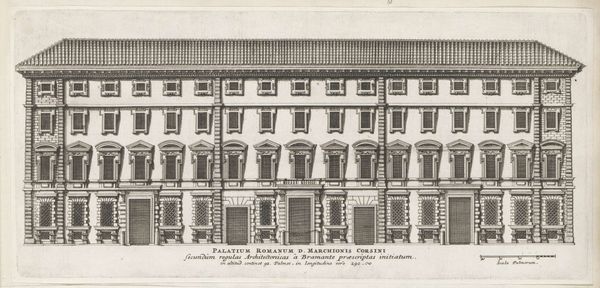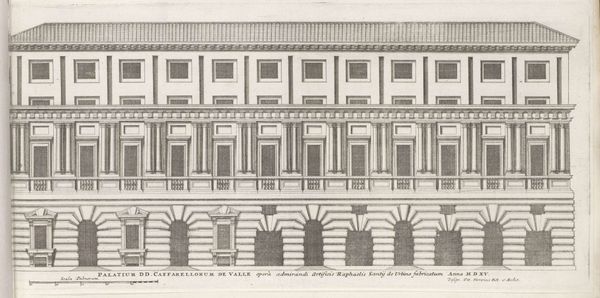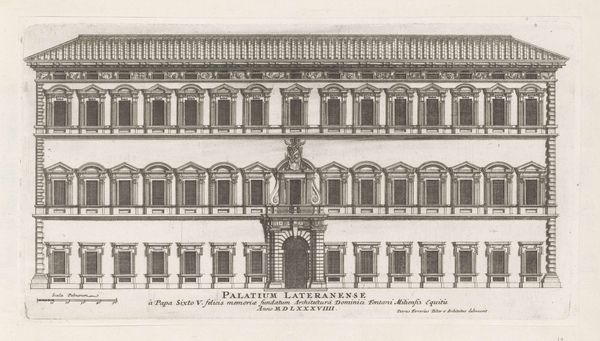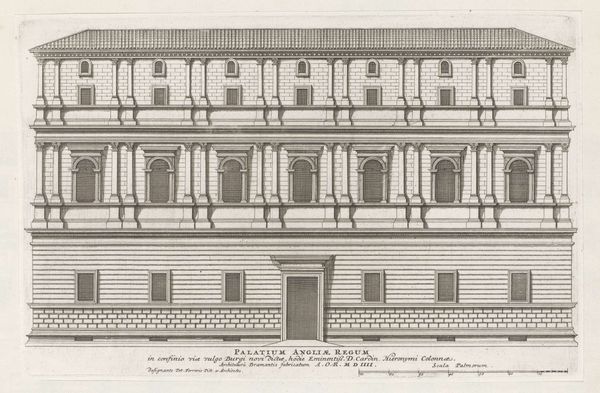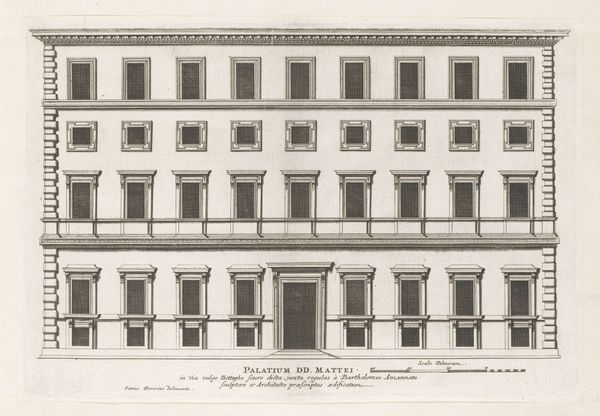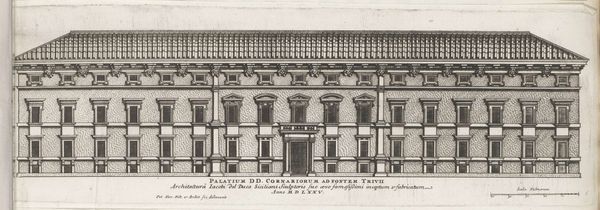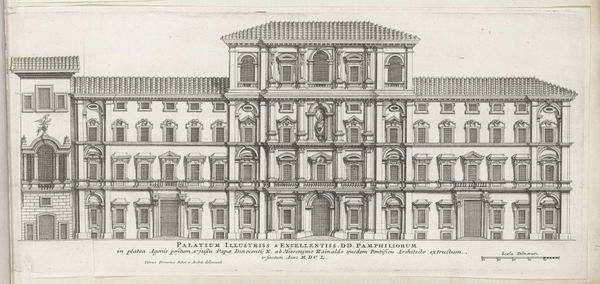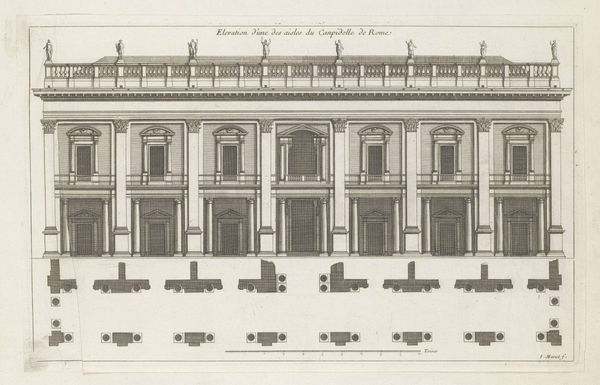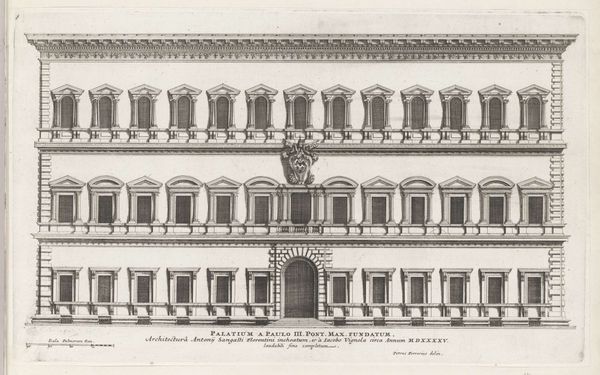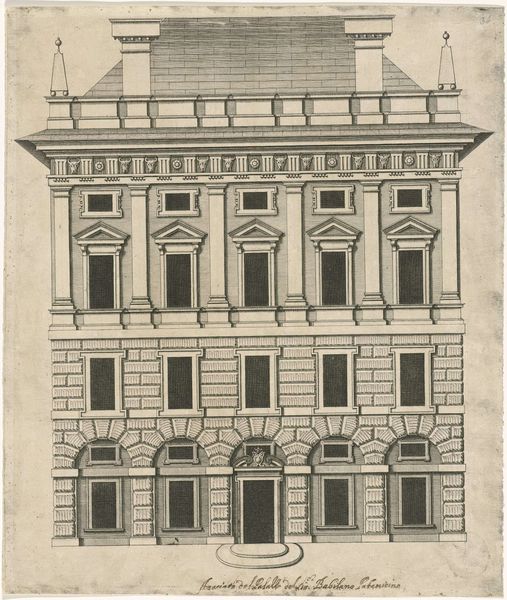
#
aged paper
#
hand written
#
old engraving style
#
sketch book
#
hand drawn type
#
personal sketchbook
#
hand-written
#
stylized text
#
pen work
#
golden font
#
building
Dimensions: height 173 mm, width 410 mm
Copyright: Rijks Museum: Open Domain
Curator: This is "Facade van Palazzo Poli te Rome" by Giovanni Battista Falda, created in 1655. Editor: Oh, wow, that's precise! It feels almost mathematically perfect, a detailed dream of Renaissance order. Kind of soothing, actually. Curator: Falda was known for his meticulous engravings documenting Roman architecture and cityscapes. He understood the power of imagery in solidifying cultural perceptions. This piece gives us a very formal view of the Palazzo. Editor: Formal indeed. So clean, but… also a little cold? Almost like looking at an architectural blueprint more than a bustling palace filled with life. The uniformity is striking. Like a grand, silent stage set. Curator: It's interesting you say that, because these images served a crucial role in shaping how wealthy tourists saw Rome on the Grand Tour. The Palazzo became iconic because of representations like this. Falda wasn't just depicting architecture; he was curating an experience, and selling a specific ideal of Roman grandeur. Editor: So, image-making as empire building, in a way. Making stone seem to sing a song of eternal power. You almost forget this isn't the palace itself, but a hand-crafted piece. Look at that detail in the rooftop tiles. Imagine the patience! Curator: Precisely! Consider how this perspective, flattened and facing us directly, invites a particular kind of engagement. No mess, no history, just pure...façade. What do you make of that carefully lettered inscription beneath the image? Editor: Ooh, elegant, like the building, stylized text floating just above the horizon. More propaganda I suppose? It tells you this is *the* palazzo, the ultimate destination in this old sketchbook. The whole thing has a lovely ghostly quiet. But beneath it, those aged, handwritten labels connect us, it lets the humanity shine. I'd like to walk into the picture if that was possible. Curator: It’s like Falda’s inviting us on a meticulously planned journey, one carefully curated to project power and permanence. Fascinating to consider the influence prints like these had on generations of travelers and, ultimately, on Rome itself. Editor: Yeah, the real genius isn’t in just the detail, it is that the artwork serves as a vessel for time and perspective—all flowing from the artist's hand to the viewers today. Powerful!
Comments
No comments
Be the first to comment and join the conversation on the ultimate creative platform.
